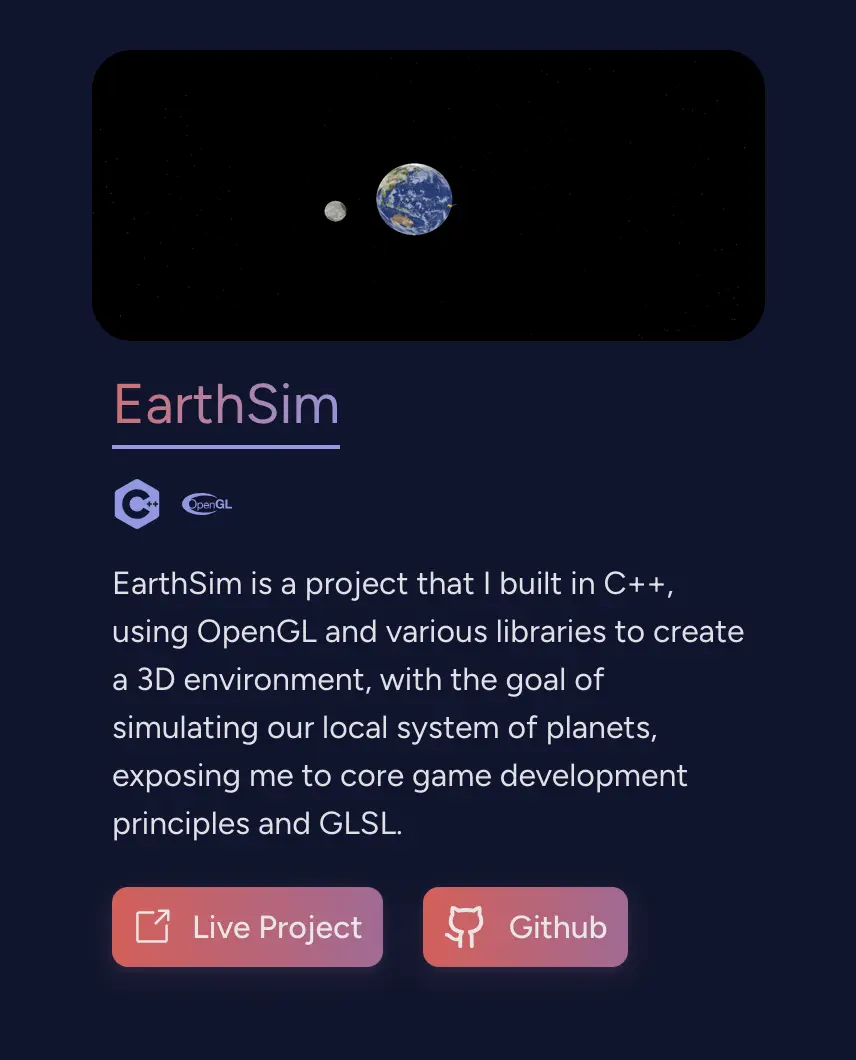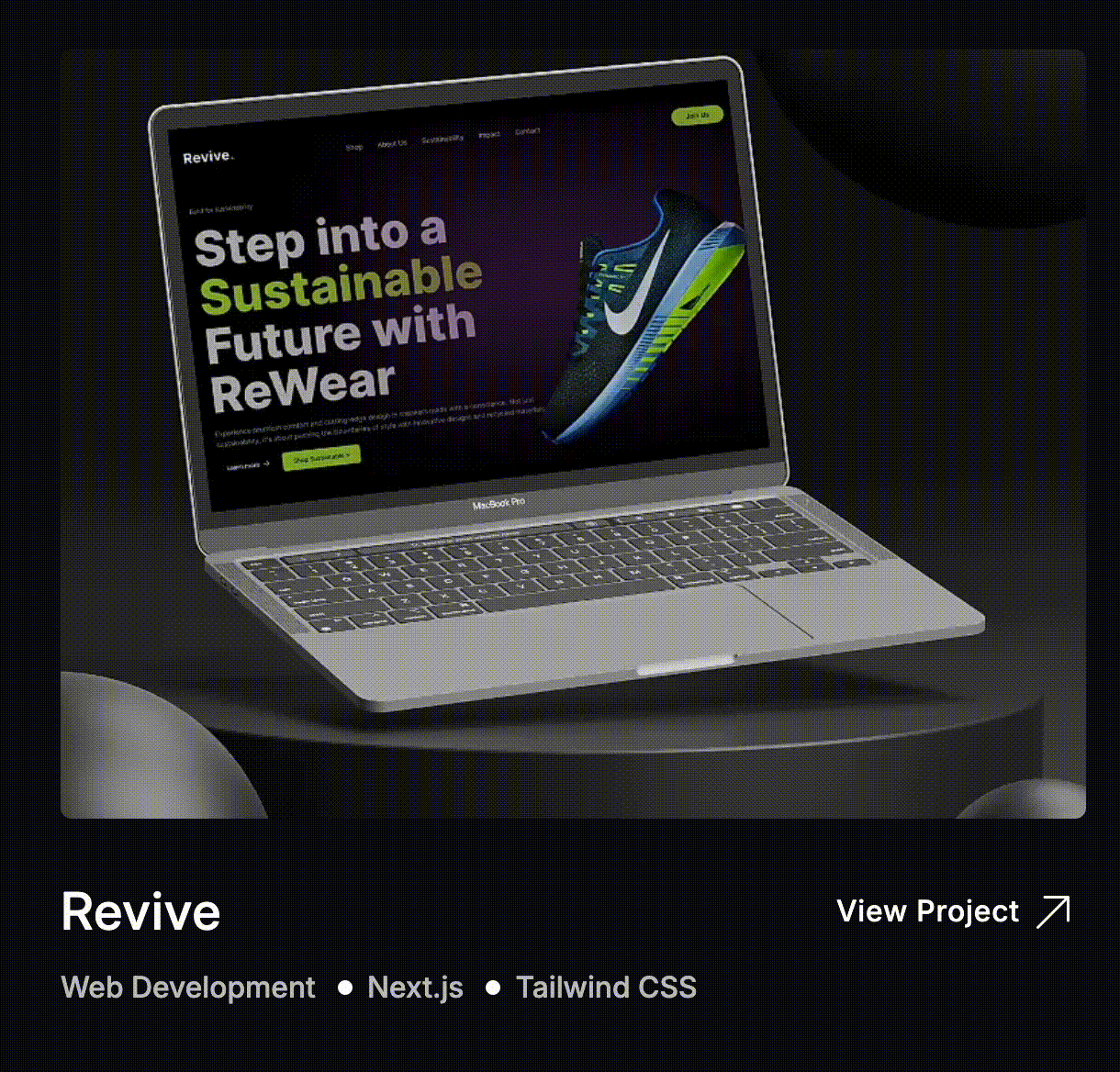Breaking into web development is tough, especially when all you have is classroom experience. That’s why your portfolio projects matter more than anything else. The projects you choose to showcase don’t just highlight your skills, they shape the first impressions you make on recruiters, clients, and fellow devs.
Web development projects are infinite, you can build anything and everything you think of, like a local restaurant website or a AI-powered chatbot. The problem is that you don’t just want to show you can code, you want to demonstrate that you can solve real problems with modern tools, and create polished usable interfaces.
This guide will cover:
- Why Your Projects Matter
- Choose the Right Web Projects
- Portfolio Project Ideas by Skill Level
- Project Ideas by Developer Role
- JavaScript Projects for Portfolio
- How to Present Your Projects
- Common Mistakes to Avoid
Why Your Projects Matter
Your portfolio isn’t just a place to dump code, it’s your proof of work. It shows you’re not just learning to code; you’re solving problems, building real things, and leveling up.
Recruiters won’t wait to open your GitHub. They’ll judge your skills based on your projects the second your portfolio loads.
That means your projects matter more than your resume if you have no work experience. A clean, thoughtful app says more about you than a list of courses.
The best portfolio projects show three things:
- "You know how to solve a problem"
- "You understand the tools you're using"
- "You care about the user experience"
Weak projects? They usually do the opposite. Broken links, copied tutorials, and messy layouts tell recruiters you're not ready.
Before you build, ask yourself: Would I be impressed by this if someone else made it?
Choose the Right Web Projects
Now the question is what should you build?
With so many web project ideas out there, it's easy to fall into decision paralysis. Do you go simple and clean, or try to impress with something complex?
The truth is, the right project isn't always the biggest, it's the most intentional. It should reflect the role you're aiming for, the skills you're building, and the problems you're excited to solve.
Portfolio Project Ideas by Skill Level
Bigger doesn't always mean better. If you're still learning the fundamentals, spending weeks trying to rebuild Netflix from scratch is more likely to burn you out than level you up.
Here are some portfolio project ideas organized by level, so you can pick the ones that fit where you are right now:
Beginner Level Project Ideas
Simpler project ideas to help you learn the foundation of web development.
1) Single Page Portfolio Website
It's a neccessity as a web developer to have a core understanding of HTML, CSS, and JavaScript. While more complex projects may not rely on these technologies as heavily, they still take some core concepts from this simple tech stack.
What you will learn:
- HTML Structure & Semantics
- CSS Styling & Layout
- Responsive Design
- Basic JavaScript
- Working with Assets
- Deploying Your Website
2) To-Do List App
The most common next project for developers, for good reason, is a to-do app with add/edit/delete functionality.
What you will learn:
- DOM manipulation
- Event handling
- CRUD operations
- Basic UI structure
Tip:
Take the project a step further, add localStorage to save tasks between sessions.
3) Open-Ended Calculator Project
Build a calculator app that performs calculations based on user input. This could be a basic tip calculator, a currency converter, a BMI calculator, or anything else you find interesting.
What you will learn:
- Handling user input,
- Performing calculations
- Updating the UI dynamically
Intermediate Level Project Ideas
Challenging project ideas that add complexity and help you master a focused tech stack.
It's at this stage of your project building journey that you will want to start tailoring your projects more towards your interests or problems.
1) Habit Tracker with Streaks & Rewards
Create a personal habit tracker that motivates users with streaks and reward badges for consistency.
Tech Stack: React + Redux + localStorage
What you will learn:
- State management
- Animations
- UX Design
2) Travel Bucket List with Map Integration
An app to add dream travel destinations, view them pinned on an interactive map, and track visited places.
Tech stack: Vue + Leaflet
What you will learn:
- Map APIs
- Local data storage,
- Visual story telling
3) Recipe Box with Personal Notes & Ratings
Save favorite recipes with custom notes, ratings, and categories.
Tech stack: Svelte + Firebase
What you will learn:
- Crud
- User-generated content
- Personal organization
Advanced Level Project Ideas
Heavy technical project ideas that provide you with real-world experience and showcase your ability to tackle complex challenges.
1) Real-Time Collaboration Tool
Build a Google Docs-style editor supporting multiple users editing simultaneously.
Tech stack: React + WebSocket (Socket.IO) + Operation Transform or CRDTs
What you will learn:
- Real-time syncing
- Conflict resolution
- Advanced state management
2) "Year in Pixels" Interactive Life Tracker
An emotional mood tracker that maps a user's year day-by-day as a pixel grid, color-coded by mood.
Tech stack: React + Canvas API or SVG + Supabase
What you will learn:
- State management at scale
- Data Persistence
- Visual Design System
- Date/Time Manipulation
Tip:
Take the project a step further, add export data as an image or PDF, add analytics
3) "The Compliment Machine"
A playful public app where users can write and submit compliments to others or the community — but only if their message is actually positive. All compliments are validated via sentiment analysis (e.g., AWS Comprehend) before being published.
Tech stack: Next.js + shadcn/ui + Tailwind CSS + Framer Motion + PostgreSQL + Prisma + AWS Comprehend
- Sentiment-based content moderation usin NPL APIs
- Database deisgn for user generated content with moderation status
- Full-stack API integration and async validation workflows
- Adding polish with animations and UI microinteractions
- Technniques for abuse prevention and rate limiting
Project Ideas by Developer Role
Different roles demand different skills. Frontend devs, backend specialists, and full-stack engineers each have unique project opportunities that highlight their strengths. Discover ideas designed to match your career path.
Frontend Developer
Interactive Data Story Telling Dashboard
Create a dashboard that visualizes a real-world dataset (e.g., climate data, stock prices) with animations and filters, focusing on accessibility and smooth UI interactions.
Backend Developer
API Rate Limiter & Analytics Service
Build a microservice that provides API rate limiting, logging, and usage analytics, with a dashboard for monitoring and configuring limits.
Full-Stack Developer
Collaborative Real-Time Whiteboard
A web app where multiple users can draw, write, and chat simultaneously, syncing changes in real time with conflict resolution.
Build a microservice that provides API rate limiting, logging, and usage analytics, with a dashboard for monitoring and configuring limits.
JavaScript Projects for Portfolio
JavaScript is everywhere, and mastering it means building projects that are interactive, dynamic, and fun. Here are some ideas that are a bit more complex than beginner level, helping you flex your skills with practical, playful projects.
1) Customizable Kanban Board
Build a drag-and-drop task management app where users can create, edit, and organize tasks across columns with persistent local storage.
Tech stack: React, TypeScript, @dnd-kit, Zustand, TailwindCSS, IndexedDB
What you will learn:
- Implementing drag-and-drop interactions
- Managing complex app state with Zustand
- Persisting data locally with indexedDB
- Buiding customizable, reusable UI components
- Adding smooth UI animations
2) Interactive Color Guessing Game
Create a fun game that challenges users to guess colors based on RGB values, featuring engaging animations and real-time feedback.
Tech stack: React, JavaScript, Tailwind CSS, Canvas API
What you will learn:
- Handling DOM events and user input
- Managing game logic and state
- Using canvas API for custom grahpics
- Cerating responsive and engaging UI feedback
3) Markdown Blog Editor with Live Preview
Develop a live Markdown editor that lets users write, preview, and autosave blog posts with smooth, instant rendering of their content.
Tech stack: React, TypeScript, Remark, Tailwind CSS, Firebase
What you will learn:
- Parsing and rendering Markdown dynamically
- Managing conrtolled inputs and live preview efficiently
- Autosaving drafts with Firebase persistence
- Creating intuitive text editing interfaces
How to Present Your Projects
Building great projects is just the start, how you showcase them can make all the difference. Your presentation is your project’s first impression. It needs to be clear, polished, and compelling.
Whether on your portfolio site, GitHub, or in an interview, your projects should show recruiters you’re detail-focused and professional.
Here are key elements to include to make your portfolio projects stand out:
- Project Title & Description
- Tech Stack Used
- Your Role & Contributions
- Live Demo & Source Code Links
- Screenshots or Videos
- Challenges & Solutions
- What You Learned
Design Examples
To inspire you, here are some great examples of project cards and presentations from real developer portfolios:
1) Clean Card Layout

Daniel Steele's portfolio presents each project with a clean title, concise description, relevant tech icons, and a subtle screenshot, creating a layout that feels both informative and easy to scan.
2) Visual Focus with Large Screenshot and Minimal Text

Binaya Bajracharya's portfolio uses bold visuals to immediately draw attention, paired with minimal but concise details like the tech stack and a clear link to view the live project. The presentation is elevated further with smooth hover animations that add polish without distracting from the content.
Common Mistakes to Avoid
Even strong projects can fall flat if they're presented poorly. Here are some mistakes that can undermine your work:
Missing Context
Just linking to GitHub is often not enough. Provider a clear explanation of what the project is, what it does, and why you built it.
Broken Links or Images
Nothing screams neglect like a broken demo or missing screenshot. Test your portfolio regularly to ensure everyhing still works.
No Live Demo
Not having a live version of your project makes it harder for viewers to engage with your work. A live version of your project is as close as tangible a recruiter can get.
Too Many Similar Projects
Three similar apps don't tell a story. Aim for a variety to demonstrate a range of skills, thinking, and growth.
